| Zeitschrift Umělec 2000/3 >> The Creator Game | Übersicht aller Ausgaben | ||||||||||||
|
|||||||||||||
The Creator GameZeitschrift Umělec 2000/301.03.2000 Petra Jedličková | focus | en cs |
|||||||||||||
|
Cyberspace is formed by a hallucination of data received from an assortment of equipment connected to the computer network. It is a world created by the increasingly improved mathematical abilities of machines, whose computational operations are getting faster and faster. It is a world created by the exponentially growing information base, to which all of the entities connected into the process of digitizing our world and ourselves are contributing. This hyperspace denies classic linear processes of problem solving. Therefore, our entry, or story, takes place as a sequence of coincidental interconnections, the connection of human fragments, texts, satellite pictures, microscopic details, technical plans, mathematical formulas, digitized music and many other electronic data, which can play different roles depending on the kind of optics we use to look at them. A picture of human tissue a thousand times enlarged, modified by a color transition, will form a new picture, like fractals, the kind we use for fabric or tappestry patterns. These compressions of time and space bring about new methods of communication, art or crime. The transmission and modification of a micro-picture symbolically indicates the contact between experiences and the values of cyberspace, which have an effect on language, art, methods of decision-making, or esthetic sensitivity, which are carried over into an environment still habitually called “the real world.” And this text, just like hyperlinks, will also connect art and fantasy to their realization in virtual reality, the development of technology to the design of the human body, and the reproduction of individuals to the Creator Game. Development of Technology and the Extension of the Body’s Anatomy. Most texts on information and communication technology deal with the description of the machines’ operations, their types and the functions of software. The fascination with numbers draws attention away from the cyclic influence human abilities have on the state of technology and the abilities of technology on people. Therefore, it is also important to study humans functioning in an environment created by information and communication technology, their relationship with their surroundings and the effects on their behavior, and not to look for importance in programs and metal, which only enable the creation of this environment. The development of computer science and communication technology conceals a strange paradox: humankind stimulates the effort to control nature and with it the reproductive process, to reveal the secrets of life and creation, and to form his own likeness of himself. The potential of the body and even character is strengthened and broadened with the help of technology, allowing the body and soul to reach new extensions. The speed of moving in time and space, the modification of appearance and gender, the heightening of the senses and many others are all examples. All of this technology at the same time is influencing the state of humans in return, changing visual forms, gender identity and biological functions. We find in fantasies, art and culture (among other spheres such as crime, whose new forms would not be possible without cyberspace) figurative, and, at the same time, representational (exemplary) and graphically produced, aspects of cyberspace. Fragments of bodies make up our visual world; we find them everywhere in such numbers that we are loosing perceptivity. Film shots, commercials, magazines, photographs and video clips use, just like a game in cyberspace, the mechanisms of various optics, enlargement, cutouts and modifications. Doubtless each photograph, each shot, is modified in some way, thanks to the magic of technology, where certain elements could be made more distinctive and their roles changed. Intensely green eyes represent multi-layered nets; the detail of an eye is accompanied by a strange visual effect; a woman’s leg is stretching, a symbol of grace; a man’s hand strikes, a symbol of power and decisiveness; fragments of bodies playing their new roles serve as icons. Music video clips are usually styled into specific colors, disregarding the “original” color of the figures. Rapidly changing scenes are accompanied by changes in the “design” of the scene, and thus, the figures change colors in order to complete the stylized scene. Each of the scenes is once again an icon, producing feeling in harmony with the music. The rapidity of the changing pictures, the changes of scenes, are so fast that they create one picture, fractal. Simulation of Reality The compression of time and space is detectable in images that simulate the real. Most photographs of “common” people are modified, so that they could reflect the esthetic ideas of the environment. Real figures then become icons, which represent and evoke the “right” examples. It is interesting that all of the technology of retouching and the mathematical operations of modifying parts of the picture are mostly preoccupied with simulation of the real. If the fragile boarder of recognition, which in my opinion keeps moving depending on the environment, should be crossed, it becomes a problem. “The deceit” is uncovered. One example of this kind of scandal is the pre-electoral poster of Petra Buzková from the year XX. This insane graphic designer attempted to achieve the “perfect” (female) skin, but it was overblown, and as a result everyone studied the details of the retouching technique, and the message this icon was originally supposed to convey was interpreted in a completely different context. Dreams of beauty, empowerment and visualization help technology then bombard the real human beings, who then look to technology to help modify their bodies. Silicon Valley has produced a mass of silicon monsters, who have modified their body parts in an attempt to look more like simulated images. The noose ironically begins to tighten around a billboard with a photograph of a female figure promoting plastic surgery. The Third Gender The fantasy does not end at playing with the visual forms of the body, not by a long shot. It is only the prelude for the creation of an image of a figure, whose likeness operates in cyberspace. More information is necessary for communication in cyberspace, which serves as social classification for communicating counterparts, regardless of whether they originate in the real world or not. Fantastic characters, robots or different “roles” of one person appear along with images of real beings expressed most often through their actions, positions, reactions, knowledge and emotions while communicating. An important part of identity in cyberspace is gender, which not only means sorting players into male and female groups according to sexual orientation, but more importantly according to social constructs, to which certain roles, positions and emotions correspond. Experiments with this kind of sorting happen very often. Men dress up as women and vice versa, and at the same time “different” genders appear, addressed as gender neutral or with special names expressing the impossibility of shoving the person into either of the traditional categories, male-female. Besides the obvious threat that the unethical usage of all these experiments may have an effect, it seems that the opportunity to be in “the shoes” of the other, or, a “different” sex is an expression of searching for identity in the “real” world, sexual orientation, and power roles, notions not possible or acceptable in the “real” world. The popular comedy Tootsie created the simulation of gender disguises. The main male character, who was living unsuccessfully as a man, dressed up as a woman and became popular and famous. If we disregard the comedic side of the film, we are faced with the opportunity to profit from changing sex (in the sense of gender, that is, sex as a social construct, not necessarily dependent on the change of biological functions). With the development of medical technology, we are able to produce this cyberspace in reality, meaning we can modify the body and even influence its functions. The possibility of creating and influencing the design of the body in cyberspace then crosses into the equipment of the “real” world. An unmentioned part of the above-indicated paradox of the development of computer science, is that it not only develops the function of the body and in return influences its visual appearance, but it also affects the biological functions of the human body, and, as we will soon see, also the reproduction process. Let’s return to the possibility of expanding the human anatomy, which gives the whole process of computer science development an erotic aspect. Characters such as Superman show how human potential could be broadened in cyberspace. The story of an ordinary reporter, who has the hidden ability to produce superhuman speed and strength, actually represents the human extension after the link with technology. Only does this empowerment bring Superman attractiveness and sex appeal. While soaring Superman charms his chosen girl, the glasses the “real” Clark Kent wears reflect the imperfection of the human senses. Men Giving Birth The fantasies fuming around the alteration and expansion of the functions of the human body often experiment with the process of reproduction. In real life, the development of medical techniques has enabled retrospective intervention (abortion) and later the timing of the whole process (birth control). Choosing the participants now allows us to observe the techniques that influence the result, and even eliminating one of the participants without thought to his original biological function in the reproduction process is a possibility (sperm banks and cloning.) These interventions into the reproductive process seem to be the peak of the perpetual attempts by alchemists at gaining control over the creation of life and its movement outside of the female body. Contemporary art, fantasy and Sci-fi represent the longings of men to gain control over the reproductive process and to give birth to offspring without the participation of women. In a fantasy, maternal functions are carried over onto a plane of conflict between life and death, in which the decision for life or death is held symbolically in the hands of the main hero—usually a male figure. Retrospective contraception solved this conflict in the film Terminator. Due to the developed techniques of travelling in time and space, a cyborg—the Terminator—is sent to Earth, whose main task is to stop the birth of his enemy, and this is to be done by eliminating his mother. This woman’s son, on the other hand, is ensuring his own insemination with the help of similar technical magic tricks, and hence, his own creation at the right time with the right father. While in Terminator human beings participated in the reproduction process in the traditional mother/father roles, in many other Sci-fi stories we can more clearly observe fractures in the traditional model. A woman’s body does not necessarily have to carry the fetus. Beings are generated through cloning, parthenogenesis, or insemination of individuals without regard to their gender. The asexual Thing, know in English as the succinct gender neutral It, reproduces like a parasite in the bodies of polar explorers and their dogs. The Alien sequels are even more famous versions this parasite, which again penetrate human and animal bodies, where they grow and reproduce. Young Aliens hatch from eggs laid by the largest, most dangerous and disgusting monster—the mother Alien. What contributes even more to the mysticism of the mother’s role in the Alien sequels is the anger, inscrutability of the chief deck computer, which the heroes address as “Mother,” and which is for some strange reason the most sadistic in its relationship with the main heroin. The monstrosity of motherhood is stressed in the third sequel in which Sigourney Weaver attempts to puzzle out the incomprehensible fondness the Aliens feel towards her. The classic relationship of victim/enemy is muddied in this story as the aliens see Weaver as their mother because she is carrying within her the fetus of their queen mother! Liters of fluid and pink slime accompany the birth of creatures in Sci-fi stories. While corrosive slime slid its way down the Alien’s grinning teeth and its eggs brimmed with the stuff, the heroes born in Matrix were literally swimming in it. Into another dimension—the Matrix—a human was born through a technical vagina filled with pink slime and snaky wires. The wires, like an umbilical cord, lead directly into the brain of the heroes, and so their bodies symbolically interconnected with the motherboard as a gate to cyberspace. The damp, dark world in fantasy stories resembles a vagina filled with water, which is either destroying the heroes or empowering them. The slime dripping from the Aliens eats through the floors of the spaceship and even the skin of its inhabitants; the gloomy dripping of water forms the background to most fantasy stories. The Savior in the film Dune drinks the water of life, which opens up a new world for him, just as it killed others before him. The symbolism of the maternal function as a border between life and death leaks through here in decisive drops. Cold metal brought to life through tissue, cyborgs as intelligent plexus of meat and wires, barbs and hoses penetrating the human brain (Puppet Masters, Matrix) and liters of mystical fluids all symbolize the mutual interconnection of human flesh and technology, which controls not only the senses, but the birth as well. With the help of technology, the characters bear offspring and themselves into a fantasy world and at the same time battle the ever-present fetal water, constricted by the umbilical cord and the whimsical behavior of pregnant monsters and motherboards. Symbolically they are fighting the mother’s body as the origin of life, created in the darkness, the warmth and dampness of the organic tissue. The sexual attraction of machines as potential extensions the body, the terror of silicon additions and modified models, the human hand desperately trying to improve the “imperfection” of human flesh with the help of powerful instruments, puppet masters controlling the creation of life without the participation of men or women in their traditional roles, these are the moments cyberspace interconnects with our real worlds as mutual interaction and the transmittance of influences. The Creator Game, in its excitement, speeds the development of technology forward, and returns like an umbilical cord noose, tightening around throats of the patriarchal heroes of the period.
01.03.2000
Empfohlene Artikel
|
|||||||||||||
|
04.02.2020 10:17
Letošní 50. ročník Art Basel přilákal celkem 93 000 návštěvníků a sběratelů z 80 zemí světa. 290 prémiových galerií představilo umělecká díla od počátku 20. století až po současnost. Hlavní sektor přehlídky, tradičně v prvním patře výstavního prostoru, představil 232 předních galerií z celého světa nabízející umění nejvyšší kvality. Veletrh ukázal vzestupný trend prodeje prostřednictvím galerií jak soukromým sbírkám, tak i institucím. Kromě hlavního veletrhu stály za návštěvu i ty přidružené: Volta, Liste a Photo Basel, k tomu doprovodné programy a výstavy v místních institucích, které kvalitou daleko přesahují hranice města tj. Kunsthalle Basel, Kunstmuseum, Tinguely muzeum nebo Fondation Beyeler.
|








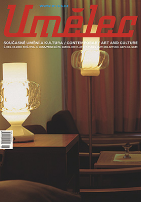





















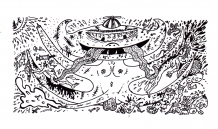




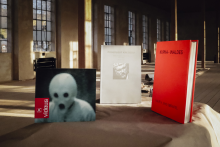

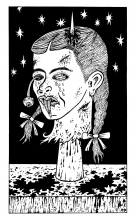
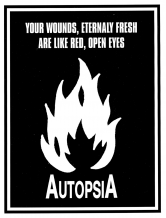


 We Are Rising National Gallery For You! Go to Kyjov by Krásná Lípa no.37.
We Are Rising National Gallery For You! Go to Kyjov by Krásná Lípa no.37.
Kommentar
Der Artikel ist bisher nicht kommentiert wordenNeuen Kommentar einfügen